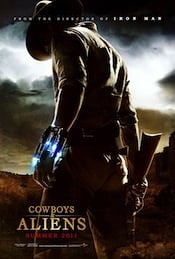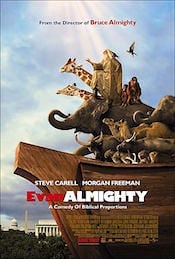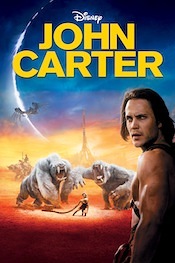In alphabetical order, we take a look at the 20 biggest movie bombs from 2005 – 2015.
Table of contents
47 Ronin (2013)

Universal and Elliot Inc.’s $175 million budgeted samurai film took a $175 million write-down, losing all but the marketing spend for one of the biggest flops not only of 2013 but of all time.
47 Ronin was a troubled production that was originally scheduled for release on November 21, 2012 but was delayed until February 8, 2013, and then delayed again because of a late ill-fated decision to add 3D and additional reshoots, which sent its budget into the stratosphere. Budgets estimates go as high as $225 million, though Universal insists it’s closer to $175 million. First time director Carl Rinsch was canned during post-production and a slew of editors tried their hand at salvaging the film.
The film’s rollout began in Japan and did poorly with a $1,022,721 opening weekend and closed with under $3 million, but while that stirred a lot of negative buzz about a samurai film tanking in Japan, their market is not very welcoming to foreign films, as they have a strong local market of movies.
More troubling was the mediocre to poor numbers 47 Ronin posted everywhere else, with the exception of a strong $26,058,135 gross from Russia. 47 Ronin pulled in $113.3 million overseas.
47 Ronin opened in the US over a crowded Christmas frame and bowed against The Wolf of Wall Street, The Secret Life of Walter Mitty, Believe and Grudge Match. 47 Ronin was tracking very poorly and received awful reviews. It pulled in a troubling $9,910,310 and placed #9 for the weekend. 47 Ronin fell 49% in its second weekend over the New Years’ frame to $5,057,215 and sank 67.5% in its third weekend to $1,644,310 and promptly lost most of its theater count.
The domestic run closed with $38,362,475. The worldwide total was $151.6 million, returning about $83.3 million to Universal after theaters take their percentage of the gross — covering most of the P&A expenses, but leaving a giant red gap of $175 million.
Battleship (2012)

Battleship cost Universal a gargantuan $209 million, though most estimates have the budget significantly higher.
This turkey staring Taylor Kitsch of the record-breaking money loser John Carter (released just two months earlier), opened overseas before its domestic bow and Battleship pulled in a healthy $239 million.
The US release was originally set for the Memorial Day frame, but it was pushed forward to May 18. Despite bad buzz trailing the picture into release, Universal gave Battleship an expensive marketing blitz, which never made the movie look like anything more than a derivative Transformers knockoff.
In addition to the traditional ad spend, Universal partnered with dozens of corporations including Coca-Cola, Kraft, Subway, Nestle, etc. – where the companies spent over $50 million tying in their crappy products with this crappy movie.
Audience awareness of Battleship was at very high levels, but the opening projections were around $40 million – which were troubling numbers for a film of this expense and plans to franchise this property.
Reviews were poor and Battleship bowed against The Dictator and What to Expect When You’re Expecting and would see direct competition from The Avengers in its third weekend.
The film came in way below expectations at $25,534,825 – placing #2 for the frame led by The Avengers. It declined a steep 56.7% in its second frame to $11,050,470, when Men In Black 3 opened and continued to post large weekly drops.
The domestic run closed with just $65,422,625. In its quarterly filing report, Comcast reported that its Universal Pictures division posted an $83 million loss, mostly attributed to the poor box office performance of Battleship.
Director Peter Berg would find box office redemption the following year with Lone Survivor and was quoted by The Hollywood Reporter as saying that the less expensive Lone Survivor would allow him to “buy back my reputation.”
Blackhat (2015)

Blackhat was financed by Legendary Pictures and the expensive marketing spend was also covered by Legendary which distributed through Universal and the studio received a fee for use of their distribution resources.
After a new 30% tax rebate for filming in Malaysia and other tax incentive-friendly locations, the budget was reported at $70 million. Blackhat was dated for January 16, 2015, and it was reported in mid-2014 that it might land a limited Oscar-qualifying release at the end of the year, before expanding wide.
The Oscar-qualifying bow was scrapped and Legendary gave the pic a pricey marketing push, spending $20.4 million just on TV spots going into release and millions more after its opening, plus millions spent on print, online, radio, etc – with a domestic P&A spend far north of $30 million.
Blackhat opened against The Wedding Ringer, Paddington, and the wide expansion of American Sniper and received mixed to poor reviews. It had a disastrous opening at $3,901,815 – placing #10 for the weekend led by American Sniper.
Audiences gave the pic a terrible C- cinemascore and Blackhat sank 57.3% in its second frame to $1,667,975 and was pulled out of all but 236 theaters going into its third weekend. It was quickly out of release with just $8,005,980.
After the poor domestic total, Legendary pulled the Australian theatrical release and dumped it straight to video. The overseas release accumulated just $11.6 million and most markets saw numbers well under $1 million.
After the costly P&A spend and theaters percentage of the gross, Blackhat‘s box office numbers would lead to a $90 million write-down on the $70 million film. Legendary had a rough start in 2015 between the $90 million loss on Blackhat and an $85 million loss on Seventh Son.
In January 2016, the Chinese company Wanda acquired Legendary for $3.5 billion, and in their financial statements, which were attained by the hollywoodreporter, Legendary lost $555.6 million in 2015. Blackhat, Seventh Son, Steve Jobs, and Crimson Peak contributed to the loss.
Cowboys & Aliens (2011)

Cowboys & Aliens was co-financed by DreamWorks, which covered 50% of the costs, Universal covered 25% and Relativity Media also covered 25% for the huge $163 million budget.
The long in development project never found a good marketing hook for the genre mashup, even with high levels of audience awareness and after an expensive marketing spend Universal released the film in the US to less than blockbuster numbers.
Dreamworks and Universal split the marketing costs and partnered with Nestle, 7-Eleven, Comcast, Sprint, Hilton, Nascar, and more to sell the film. Months before release, Cowboys & Aliens were plastered all over popcorn bags/buckets and soda at movie theaters, but even with all that exposure, the pic opened with $36,431,290 – coming in far below its $45 million expectations and just edging ahead of The Smurfs.
The film proved to have weak legs and dropped 56.8% in its second frame to $15,729,455 when Rise Of The Planet Of The Apes opened, killing its chances of breaking out. The pic did manage to hit $100,240,551 at the domestic box office, but a weak overseas total of $74.5 million left the financiers with huge losses.
With a $174 million worldwide total, UIP (joint distribution between Universal and Paramount) released the film in most territories and the companies would see back about $95 million after theaters take their percentage of the gross, which would not even cover the huge worldwide ad spend.
Universal president Ron Meyer was quoted as saying, “Cowboys & Aliens was a big loss.” “Certainly you couldn’t have more talented people involved in Cowboys and Aliens, but it took, you know, ten smart and talented people to come up with a mediocre movie. It just happens.”
Evan Almighty (2007)

Originally to be financed between Sony and Universal, Sony pulled out when Evan Almighty was to be budgeted at a costly $140 million and Relativity Media agreed to finance half of the budget.
Relativity recently set up a second hedge fund for investors to finance films through Sony and Universal called Gun Hill Road II, which had $700 million in equity and Evan Almighty was one of the first to dip into those funds.
Relativity capped their investment at the initial budget when the film was going massively over budget and Universal had to foot the added expense. The reported budget by Universal was $175 million, though most speculation has the budget north of $210 million, turning the film into the most expensive comedy ever made. Universal also spent an estimated $50 million on domestic marketing for the oversized film and Universal’s parent company General Electric contributed an additional $25 million in marketing support for a green initiative.
GE set up a Get on Board eco-awareness campaign to show audiences ways to slow down global warming and at the same time letting people know Evan Almighty is opening soon in theaters – and also promoting how responsible the filmmakers were by recycling materials and bike riding on set instead of driving cars.
Not included in the GE green initiative was that they are one of the largest corporate producers of air pollution in the United States, releasing millions of pounds of toxic chemicals into the air every year.
Director Tom Shadyac had an abusive temper tantrum at a Universal marketing meeting, enraged that the studio was capping the domestic P&A costs at $50 million when he demanded an $80 million marketing blitz.
Universal was also targeting religious groups and churches throughout their marketing push, previewing the pic in 50 cities to spread word of mouth amongst the faithful. Evan Almighty was tracking near a $50 million opening and Universal’s expectations were closer to $40 million, but it came in with a troubling $31,192,615 opening weekend.
Any sign of the film reaching profit was killed off when it fell 51.5% in its second weekend to $15,143,945 – when it lost most family auds to Ratatouille. Evan Almighty had enough legs to push the domestic total to $100,462,298 which would only cover the ad spend in the US after theaters take their percentage of the gross.
The overseas gross was a disastrous $72.9 million. After the film bled red ink, Universal canceled the Japan release and it was dumped straight to video, which was the final market left to open. The worldwide total was $173.4 million, leaving Universal with about $95.3 million after theaters take their cut.
Flushed Away (2006)

Flushed Away was financed by DreamWorks Animation for $149 million and released through their distribution deal with Paramount.
Flushed Away opened in the US against The Santa Clause 3: The Escape Clause and the two films competing for family audiences cannibalized each other. Paramount stated that they were contractually required to keep the release date after corporate deals were locked in with promotional tie-ins two years prior.
Flushed Away opened slightly behind Santa with $18,814,323 – placing #3 for the weekend led by the surprise hit Borat. The pic had a great second weekend hold, declining only 11.7% to $16,606,526 but it sank 60.3% in its third frame when the animated Happy Feet opened.
It closed its US run with a troubling $64,665,672.
The overseas cume was a soft $113.4 million, which was in line with most of Aarman’s previous stop-motion features that cost a fraction of this expensive CG toon. A solid $22 million from the UK was the strongest market.
After an expensive worldwide ad spend, Flushed Away ended as one of the biggest flops on record with DreamWorks Animation taking a massive $109 million write-down on the film.
DreamWorks Animation and Aardman severed their relationship after the film posted the huge loss.
How Do You Know (2010)

Sony financed this $120 million fiasco that went over an already high budget when director James L. Brooks decided to reshoot the beginning and the end of the film.
With a budget that high and a pricey marketing spend to follow, the film would have to pull in unrealistic numbers to just break even.
Sony positioned the film during a very crowded end of the year market with well reviewed adult fare The Fighter and Black Swan expanding and competing for similar auds.
How Do You Know was tracking very poorly going into release and was estimated to pull in just $10 million, but was a huge disaster, opening to $7,484,696 – placing #8 for the weekend led by Tron Legacy and Yogi Bear.
Audiences did not like How Do You Know any more than critics and it earned a toxic C- cinemascore and it declined 52.6% in its second weekend to $3,548,965. It posted a 28.1% gain over the New Year frame to $4,547,420 but it was too little too late. It vanished quickly from US theaters with $30,212,620 and Sony would see back about $16.6 million after theaters take their percentage of the gross, which would not even cover the P&A costs.
Sony released the film overseas to even worse numbers and racked up a sizable marketing spend that just added to the loss. It pulled in a dismal $18.4 million and was Sony’s biggest flop of 2010. James L. Brooks’ Gracie Films had a home at Sony since 1990 and after How Do You Know flopped, Sony declined to renew their deal with the filmmaker.
Hugo (2011)

Graham King’s GK Films financed the film for what was originally a $100m budget until it went over budget with estimates as high as $180m. Paramount distributed in the US and despite 11 Oscar nominations and critical acclaim, the film struggled at the box office.
Hugo opened with $11,364,505 at 1,277 theaters, with the hopes that word of mouth would help sell the film which had a difficult time connecting with audiences through weak marketing.
Hugo did have legs and grossed $73,864,507 at the US box office, which would cover the ad spend after theaters take their percentage of the gross, but that would not put a dent in the colossal budget.
Overseas, Paramount distributed in some territories and put the film out mostly through UIP (joint distribution between Paramount and Universal) and the film pulled in $111m, which while a decent number, was again not nearly enough to cover the budget that spiraled out of control.
GK Films would take an $80m loss on the project and Hugo caused a rift and then departure in their financial partnership with Texas oilman billionaire Tim Headington, who was a main line of support for Graham King’s company.
The financial loss would also create a rift between King and director Scorsese, who had provided capital for the director’s films for decades.
Jack The Giant Slayer (2013)

Jack The Giant Slayer was co-financed by Warner Bros’ New Line division and Legendary and expensive reshoots ballooned an already monstrous budget to over $200 million.
The picture was originally set to be released on June 15, 2012, but post-production was slowed down from the ever troubled visual effects company Digital Domain.
The cash stressed VFX house foolishly underbid to get the vfx heavy film and then found themselves in over their head and barely able to pay most of their employees to work on it, which the vfx artists aptly named ‘Jack the Company Killer‘.
Digital Domain also used new software and techniques on the Jack The Giant Slayer, which ended up not working and many scenes had to be redone. The vfx mess caused the picture to be pushed back to March 22, 2013. Digital Domain would continue bad ideas and worse management in 2013 when they contributed to the budget of the flop Ender’s Game and found themselves ruined and sold off.
Warner Bros then pushed the pic forward to March 1, 2013, which was just one week before Oz The Great And Powerful opened and the Oz movie was tracking strong and competing for the same auds as Jack The Giant Slayer.
Reviews were mixed and tracking was pointing to a troubling mid to high $20 million weekend. It was booked into 3,525 theaters and bowed against 21 And Over, The Last Exorcism Part II, and Phantom.
It pulled in $27,202,226 – winning the weekend at the box office. Predictably, Oz The Great And Powerful siphoned much of Jack‘s audience and it sank 63.8% to $9,839,135. Jack The Giant Slayer closed its domestic run with $65,187,603.
Overseas, the film pulled in mediocre numbers in most territories and grossed $132.5 million.
The worldwide cume was $197.6 million, which would return about $108.6 million after theaters take their percentage of the gross – which would likely cover most of the P&A expenses, but the theatrical receipts would not put a dent in the budget.
Director Brian Singer would find box office redemption the following year with X-Men: Days of Future Past.
John Carter (2012)

John Carter is the reigning champion of financial loss, with Disney taking a $200 million write-down on the box office disaster.
Director Andrew Stanton treated the live-action film like his or any other Pixar production – scrapping previously filmed footage and reshooting and reworking the movie until this fiscally irresponsible film had a budget that ballooned into excess at $306.6 million.
The British tax authority issued a tax rebate to Disney for $42.9 million, bringing Disney’s exposure to the budget to $263.7 million.
On top of the exorbitant production expense, the mouse house invested north of $100 million into an unfocused marketing campaign.
Originally titled John Carter of Mars, it was shortened to just John Carter after Disney didn’t want any association of their expensive film with their turkey Mars Needs Moms. The generic and not very telling title wasn’t the cause of the $200 million loss, but it’s one of many bad decisions that led to the film’s box office demise.
The trailers and the ad material were confused at best and fell flat with not only spectacle but never made it clear who this John Carter guy really is and the ads never connected with audiences.
There was plenty of finger-pointing and blaming about who was responsible for the wretched marketing, but it’s director Andrew Stanton that had creative control of the initial marketing campaign and the dull first trailers.
The film was tracking very poorly for months up to release and a last-minute effort to make a more focused ad spend was too little too late. Disney continued to throw cash at an ad spend that wasn’t doing anything for audiences but clogging up the TV airwaves. Throwing good money at a big problem, without addressing the problem was just creating a giant money suck.
The mouse house opened John Carter in the US against Silent House and A Thousand Words and it pulled in a soft $30,180,188 – placing #2 for the weekend behind Dr. Seuss’ The Lorax in its second frame.
John Carter proved front-loaded and fell 55% in its second weekend to $13,569,795 killing its chances at breaking out. The pic continued to post large declines and when the gross sputtered out at $69 million, Disney paired John Carter as a double feature with The Avengers in its first weekend in over 150 drive-ins, which helped boost its final gross to $73,078,100.
The picture fared a bit better overseas with a $211 million cume, bringing the worldwide gross to $284 million – which after theaters take their percentage of the gross, left Disney with the biggest movie flop of all time.


